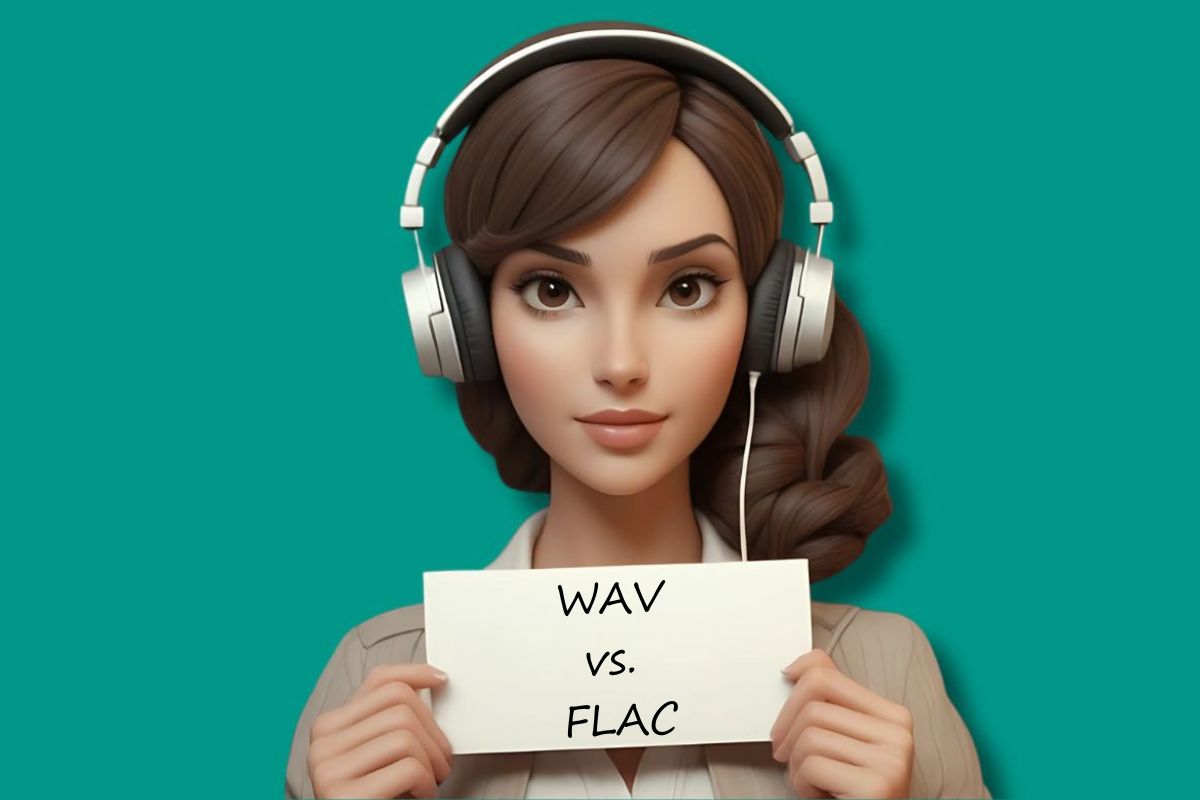
Every now and then, the debate resurfaces: Is WAV better than FLAC? And what about MP3, AAC, or even more exotic formats like DSD? For audiophiles and casual listeners alike, the jungle of audio file formats can be confusing. The good news is that once you understand the basics — codecs, wrappers, and how compression works — it all starts to make sense.
Let's break it down!
Codec vs. Wrapper: The Foundation of Audio Files
One of the biggest sources of confusion is the difference between a codec and a wrapper:
Codec (coder-decoder): Defines how audio is stored and read. Some codecs are uncompressed (like raw PCM in WAV), some use lossless compression (like FLAC or ALAC), and others use lossy compression (like MP3 and AAC).
Wrapper (or container): Think of this as the envelope. It holds the audio data (encoded by a codec) along with metadata like file size, sample rate, and more. Examples include .WAV, .AIFF, and .M4A.
This means two files with the same extension don't always use the same codec. For instance, a WAV file could contain uncompressed PCM, but technically it could also hold compressed or lossy audio.
Common Audio Formats Explained
WAV (.WAV)
Introduced in 1991 by Microsoft and IBM, WAV is one of the most widely used audio wrappers. Typically, it contains uncompressed Linear PCM, making it a popular choice in professional audio production. However, WAV files can also hold other codecs, even lossy ones — though that’s less common in practice.
- Pros: Uncompressed, widely supported, ideal for editing.
- Cons: Large file sizes, limited metadata support.
FLAC (.FLAC)
The Free Lossless Audio Codec is exactly what it says: a format that compresses audio without losing a single bit of quality. On playback, your DAC (digital-to-analog converter) receives the exact same data as it would from a WAV file. The only difference is that FLAC is more storage-friendly, typically reducing file size to 60–65% of the original.
- Pros: Lossless, smaller than WAV, supports rich metadata.
- Cons: Some older or low-power devices may struggle to decode FLAC smoothly.
MP3 (.MP3)
The veteran of digital audio. Developed by Fraunhofer, MP3 uses lossy compression to shrink file sizes dramatically — often to less than 10% of the original. Quality depends on bitrate: 128 kbps is serviceable, while 320 kbps is considered near-CD quality.
- Pros: Universal support, tiny files, good for casual listening.
- Cons: Loss of detail, especially at lower bitrates.
AAC (.M4A)
Apple popularized the Advanced Audio Codec, which is technically superior to MP3. AAC delivers the same sound quality at about half the bitrate, making it ideal for streaming. It usually comes wrapped in .M4A files.
- Pros: More efficient than MP3, widely used in streaming.
- Cons: Still lossy, though higher bitrates minimize noticeable losses.
DSD (.DFF / .DSF)
A niche format used mainly for Super Audio CDs (SACDs), DSD stores audio in 1-bit delta-sigma modulation at extremely high sampling rates. While technically fascinating, it’s far less common outside of hi-fi circles.
WAV vs. FLAC: Do They Sound Different?
On paper, WAV and FLAC should sound identical. Both deliver the same bit-perfect audio to your DAC. The only difference is that FLAC is compressed, while WAV is not.
Some listeners claim they hear a difference in favor of WAV, but controlled comparisons usually reveal no audible distinction. If you want to test this yourself:
- Rip a CD to both WAV and FLAC using a program with checksum verification.
- Play both files back on the same setup.
- Compare by ear.
Chances are, you won't notice a difference — unless your player struggles to decode FLAC properly (rare on modern equipment).
So, Which Format Should You Choose?
For professional audio editing and recording: WAV (or AIFF) remains the standard because it's simple, uncompressed, and universally supported.
- For personal music libraries and archiving: FLAC is ideal — smaller files, full fidelity, and rich metadata.
- For casual listening or streaming: AAC or MP3 are more than sufficient, especially at higher bitrates.
- For audiophile experiments or SACDs: DSD has its niche, but it’s not essential for most listeners.
In Conclusion
The WAV vs. FLAC debate often comes down to perception rather than science. Both deliver the same quality, but FLAC is simply more efficient. Understanding how codecs and wrappers work helps cut through the confusion, letting you pick the right format for the right purpose.
At the end of the day, whether you're archiving your CD collection, streaming on your phone, or mixing a new track, the "best" format depends on your needs. And if you ever find yourself caught in a heated audio forum argument — remember, the DAC doesn't care if it's WAV or FLAC.